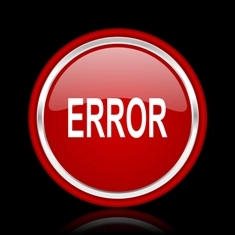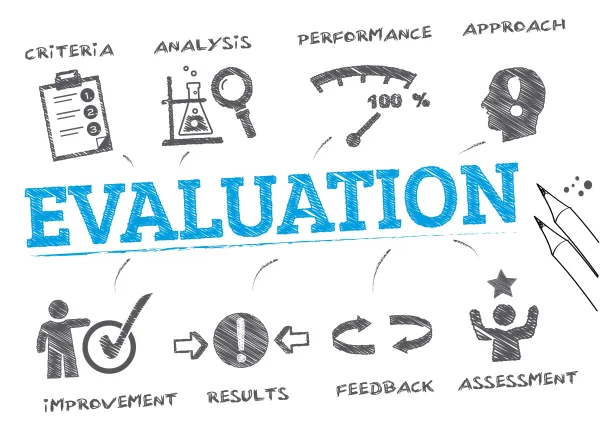EM Coding Alert
Align Your Answers With These E/M Coding Solutions
Hint: Study the telemedicine modifiers. Did you make an A+ on our coding quiz? Test your knowledge and check your answers against our pros’. Answer 1: Don’t Forget Modifier for Locum Tenens False. You must append modifier Q6 (Service furnished by a locum tenens physician) to any code for services the locum provides. In the medical field, a practice might bring in a locum tenens (LT) physician to temporarily replace another physician who cannot be in the office for some reason like vacation, illness, or maternity leave. Rationale: When you bill a LT physician’s services, you are actually billing them under the physician he is replacing for that time period. Modifier Q6 indicates that the LT physician is practicing medicine on behalf of the original physician, who is not available to see patients. The modifier shows that the situation is temporary. Modifier Q6 protects your physician in the event of an audit, because your original physician didn’t perform those services — the locum did, says Maggie M. Mac, CPC, CEMC, CHC, CMM, ICCE, AHIMA-approved ICD-10 CM/PCS trainer and president of Maggie Mac-Medical Practice Consulting in Clearwater, Fla. Watch Out: Don’t confuse modifier Q6 with modifier Q5 (Service furnished by a substitute physician under a reciprocal billing arrangement). Q5 is for reciprocal billing and, although related to LT services, is not associated with the billing of the services by the originating provider office. Answer 2: Always Keep Time in Mind When your physician performs hospital discharge services, your options are as follows: Looking at the code descriptors, you can see that the choice between the two codes depends on the time your provider spends on the discharge services. So, you will look in the documentation for notes about the time the physician spent with the patient. “We teach our faculty physicians and residents to note the time they spent in the record,” says Charlotte T. Tweed, RHIA, CPC, coding auditor and GME interim compliance manager and privacy officer at Florida Hospital in Orlando. “Documenting the time will meet all contracted insurance requirements. We will always check the chart prior to coding 99239 to verify the time is documented and the qualification has been met.” Note: If there is no time notation in the discharge service documentation, you must code 99238 rather than 99239. “Currently the default is 99238 and, while not preferable, if no time is documented then it can still be coded,” Tweed explains. “Proper time documentation for all discharge services in the medical record will protect the physician regardless of what the current insurance requirements are or may change to. These requirements do change from time to time depending upon contracts and CMS carriers. Getting in the habit of always noting the time for discharges will protect the physician in every situation.” The documentation should also illustrate the final physical examination of the patient along with pertinent discharge information. This could be instructions for care, a follow-up appointment schedule, home care contacts and tasks, or any number of other relevant information around the successful discharge of the patient. Answer 3: Remember Modifiers GT/GQ and Modifier 95 for Telemedicine Medicare requires you to append either modifier GT (Via interactive audio and video telecommunication systems) or GQ (Via asynchronous telecommunications system) to your CPT® or HCPCS code when you report telemedicine services with POS code 02. In fact, your Medicare Administrative Contractor (MAC) will deny the service if you use the POS code 02 without the appropriate GT or GQ modifier, or vice versa. New modifier: For 2017, CPT® gives you modifier 95 (Synchronous telemedicine service rendered via a real-time interactive audio and video telecommunications system) to report telemedicine services your physician provides via real time, interactive audiovisual telecommunications. Important: “Only when the 95 modifier and the correct POS of 02 are indicated on the claim, will it be considered for reimbursement by most payers that don’t recognize the GT modifier,” says Suzan Hauptman, CPC, CEMC, CEDC, AAPC Fellow, senior principal of ACE Med group in Pittsburgh, Pa. The GT/GQ modifiers are primarily accepted by Medicare and those payers that follow Medicare guidelines such as many of the managed care products. Remember: Practices should always check with the payers on telemedicine coverage policies and the use of the appropriate modifiers — 95 or GT/GQ. Answer 4: Combine Modifiers 24 and 25 on Same Claim You may find yourself in situations where you need to combine the forces of modifiers 24 and 25 (Significant, separately identifiable evaluation and management service by the same physician or other qualified healthcare professional on the same day of the procedure or other service) to avoid a denial of a claim. You can use 24 and 25 on the same claim, if you are seeing a patient for a completely new issue within the post op period of another procedure with a 10-day global period, another service was done that same day, and the E/M code is significant and separately identifiable from the procedure. Actually, the 79-modifier (Unrelated procedure or service by the same physician or other qualified health care professional during the postoperative period) would be more appropriate when performing another procedural service during that time period. You should never append modifiers 24 and 25 to procedures — only E/M services. You should never append modifier 79 to an E/M code — only procedural services. Example: A patient undergoes a minor surgery. During the postoperative period, the patient comes for an office visit that is absolutely unrelated to the first surgery. At the unrelated E/M visit, the physician also performs another minor surgical procedure (such as a biopsy) unrelated to the initial surgical procedure. You will append both modifiers 24 and 25 to the E/M code — modifier 24 to allow payment of the E/M service in the global period of the initial surgery and modifier 25 to allow payment of the E/M service along with another procedure performed on the same day. Tip: Always use modifier 24 first, before you use other modifiers. Most computers sequence their edits, putting the postoperative period edits as the primary edit. Additionally, when both modifiers affect payment, they should be in numerical order.
Related Articles
EM Coding Alert
- CCI:
Master the Nuts and Bolts of CCI Edits to Excel in Your E/M Coding
Prep for CCI with tips from our pros. CMS created the Correct Coding Initiative (CCI) [...] - Coding Quiz:
How do You Choose the Right Hospital Discharge Code? Find Out
Hint: Time is the deciding factor. It’s no secret that evaluation and management (E/M) coders [...] - Coding Quiz Answers:
Align Your Answers With These E/M Coding Solutions
Hint: Study the telemedicine modifiers. Did you make an A+ on our coding quiz? Test [...] - You Be the Coder:
Understand Exam Levels for Other MACs
Question: Our office is located in New Jersey, and we see patients from Pennsylvania, too. Concerning [...] - Reader Question:
Get New Health Risk Assessment Instrument Codes
Question: Can you tell me about code 99420? One of our physicians wants more information about [...] - Reader Question:
Correctly Report Tick Removal
Question: An established patient who has been experiencing pain and itching and noticed a tick embedded [...] - Reader Question:
Learn When to Bill E/M with 29530
Question: After evaluating an established patient’s sprain of the medial collateral ligament (M23.52) of her left [...] - Reader Question:
Decipher Complicated Coding Scenario
Question: A patient came into our office for a scheduled visit, and we sent him directly [...] - Reader Question:
Don't Use 99211 as Catchall Code
Question: How should I bill the administration of the second and third shot of Gardasil? Can [...]




